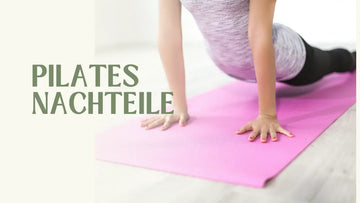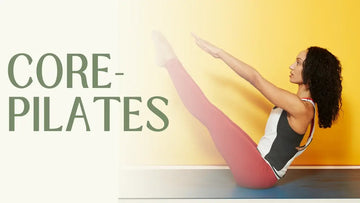Pilates is a proven training method that helps many pregnant women to stabilize their core and prevent discomfort. However, there are specific exercises that should not be performed during pregnancy in order to avoid unnecessary strain on mother and child. Below we explain which Pilates exercises are contraindicated, why this is the case and what alternatives are available.
Pilates during pregnancy – basics and benefits
Pregnancy is a time of intense physical changes. The growing belly, changed joints and a shifted center of gravity present the body with new challenges. Regular, adapted Pilates can help to specifically strengthen the muscles during this phase - especially the pelvic floor and the deep abdominal and back muscles. In addition to improving posture, Pilates also supports breathing, promotes relaxation and can thus increase general well-being.
It is essential that the training is individually adapted to the needs of the expectant mother. Expert trainers modify the exercises according to the trimester and ensure that there is no excessive strain.
Dangerous Pilates Exercises During Pregnancy
Not every exercise that is useful in regular Pilates training can be safely integrated into pregnancy. We advise against the following exercises:
1. Exercises in the prone position
As your belly size increases, lying on your stomach is not only uncomfortable, but can also impair blood flow. Training in the stomach position is particularly discouraged in the second and third half of your pregnancy. Exercises that force the spine into an excessively hollow back position should also be avoided, as they increase the pressure on the internal organs and the diaphragm.
2. Intensive abdominal exercises
The straight abdominal muscles should no longer be trained vigorously from the 20th week of pregnancy in order to avoid a rectus diastasis - a separation of the straight abdominal muscles. Exercises such as classic sit-ups or crunches, which place a massive strain on the abdomen, are contraindicated during this time. Instead, the focus should be on gently stabilizing the core of the body.

3. Exercises with strong rotational movements
Dynamic and fast rotational movements can place excessive strain on the spine and pelvic floor. Especially with exercises that require strong rotation of the upper body, there is a risk that muscular imbalances can arise due to asymmetrical strain. Caution is advised here, as uncontrolled rotation can further destabilize the already altered body.
4. Exercises in the supine position
In the advanced stages of pregnancy, lying on your back for long periods of time should be avoided. The pressure of the growing uterus on the inferior vena cava can lead to circulatory problems and thus impair the supply of blood to mother and child. For this reason, Pilates exercises that are performed lying on your back are modified or avoided entirely in the later trimesters.
5. High-load exercises with jumping components
Even though jumps and jerky movements are rare in classic Pilates , any exercise that places excessive strain on the body or requires sudden, explosive movements should be avoided during pregnancy. An abrupt change from tension to relaxation can increase the risk of injury and lead to unwanted pressure on the pelvic floor and joints.
Recommended alternatives and safe modifications
Instead of risky exercises, we use modified versions during pregnancy that meet the changed needs. The following approaches have proven to be particularly beneficial:

Gentle stabilization exercises
Exercises in the quadrupedal position, lying on your side or sitting down offer an excellent alternative. These positions take the pressure off the stomach, but still allow for effective training of the deep core muscles. Slow, controlled movements improve stability without putting excessive pressure on the stomach.
Focus on the pelvic floor
A strong and flexible pelvic floor is not only essential for everyday life, but also for the upcoming birth. We integrate targeted pelvic floor exercises into the training, where conscious contraction and relaxation are practiced. These exercises, in combination with gentle breathing techniques, can lead to improved body awareness.
breathing and relaxation exercises
The deep breathing exercises that are part of Pilates play a central role during pregnancy. Conscious diaphragmatic breathing expands the chest, which improves the oxygen supply and reduces stress. These elements can be easily integrated into any training session and contribute significantly to relaxation.
Modified core exercises
Instead of intensive abdominal exercises, we recommend variations in which the abdominal muscles are activated in a neutral position. For example, exercises can be performed while sitting or in slightly raised torso positions where the focus is on gentle activation rather than strong contraction.
Tips for safely performing Pilates during pregnancy
To minimize the risk of injury and to get the most out of your training, we recommend the following rules of conduct:
-
Consultation with a doctor: Before starting or continuing a Pilates program, you should always consult your doctor. This is particularly important in the case of high-risk pregnancies or existing medical conditions.
-
Individual adaptation: Every pregnancy is different. Therefore, training should be individually adapted to the physical requirements and the respective trimester.
-
Listen to your body: A signal from your body – be it discomfort, pain or dizziness – should be taken seriously. In such moments, you should stop the exercise immediately and adjust your training if necessary.
-
Qualified instruction: Ideally, the training takes place in a Pilates course specifically designed for pregnant women, where the trainers have experience in dealing with the physical changes during pregnancy.
-
Suitable equipment: A non-slip mat, comfortable sports clothing and, if necessary, aids such as small pillows or exercise balls support the safe execution of the exercises.
-
Slow progression: Increase the intensity of your training very carefully. The focus is on a continuous, gentle improvement in stability and flexibility, not on rapid progress or intense strain.

Frequently Asked Questions (FAQ)
Can I do Pilates while pregnant?
Yes, Pilates is generally possible during pregnancy and can have many positive effects. It is important that the exercises are adapted to the individual condition and the respective trimester. If you are unsure, you should always seek medical advice.
Which Pilates exercises should definitely be avoided?
In particular, exercises in the prone position, intensive abdominal exercises (e.g. classic sit-ups and crunches), strong rotational movements and prolonged training in the supine position are not recommended. These can place excessive strain on the abdomen, restrict blood flow and increase the risk of rectus diastasis.
Are there safe alternatives to the contraindicated exercises?
Yes. Exercises in the quadrupedal position, lying on your side or sitting offer safe alternatives. Targeted pelvic floor training and modified core exercises that activate the abdomen in a neutral position are also recommended.
How can I tell if an exercise is too intense?
Pay attention to the signals your body is giving you. Pain, dizziness or an uncomfortable feeling during the exercise are warning signs. Expert instruction in a special pregnancy Pilates course is also helpful to ensure correct execution.
Do I have to avoid Pilates completely if I have a high-risk pregnancy?
In the case of high-risk pregnancies or specific complications (such as premature labor, vaginal bleeding or cardiovascular disease), it may be necessary to adapt the training or to forego it altogether. In this case, the individual situation should always be assessed in consultation with a doctor.
Conclusion
We are convinced that Pilates - in an adapted, safe version - offers an excellent opportunity to strengthen the body, prevent discomfort and prepare mentally for the birth, even during pregnancy. It is crucial to pay close attention to your own limits and to consistently avoid exercises that place excessive strain on the stomach and back. With expert instruction and individually coordinated modifications, expectant mothers can enjoy the full benefits of Pilates training.
We recommend that you do your research before training, seek advice from experts and always listen to your own body. This way, Pilates training remains a valuable building block for health and well-being - both during pregnancy and afterwards.



















